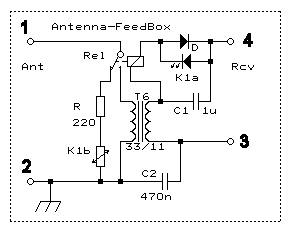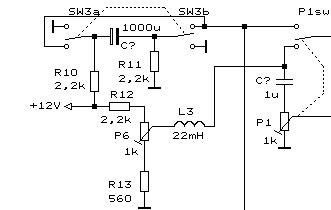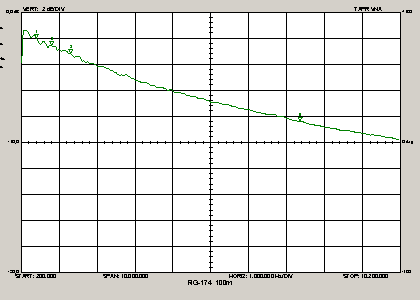
Block circuit showing the principal setup
This whole idea came about when I had to run a RG174 feed cable to the EWE feed that was further away from the house than the termination side. So why can't I use the feed cable screen as the antenna itself and saving one wire?
Well, I can and it's rather easy to achieve. The key component is the RF blocker that isolates the sides of antenna and feed line going to the house. It is a FT140-77 torroid on which is wounded as many turns of RG174 as possible. 40 turns in my case. This represents about 22k-Ohm @ 1MHz, enough for an efficient RF barrier. Even for 100 kHz it is 2200 Ohm.
Now assume both switches are set to the left side. The EWE far side transformer secondary feeds Feed-1. At the near side the RG174-screen is connected to the termination resistor completing the EWE structure.
Flipping both switches to the right side and you get signals from the opposite direction on Feed-2. Setting each switch to the transformer side and you get front and back signal simultanously on Feed-1 & Feed-2. These can be used for phasing. Make sure that Feed-1/2 is terminated with 50 Ohms all the time, because it translates to about 450 Ohms and is needed by the EWE instead of the usual 560 Ohm resistor to keep its directivity.
Using both signals of the same antenna for nulling is amazing. The phaser is a lot easier to adjust and often needs no phase shift. Just add or subtract both signals, adjust the magnitude and the unwanted it gone, that works down to LW. I could cancel out BBC-198 amd hear Poland, cancel DLF-153 and hear Yunost (Taldom), cancel Kaliningrad-1215 and hear Virgin. For lack of MW TA signals I went to the tropical band. Switching to one side you hear on 49xx kHz China, while the other end of the same antenna gave Brasil.


